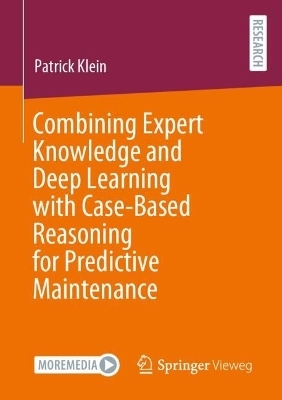
Combining Expert Knowledge and Deep Learning with Case-Based Reasoning for Predictive Maintenance
Springer Fachmedien Wiesbaden GmbH (Verlag)
978-3-658-46985-6 (ISBN)
- Noch nicht erschienen - erscheint am 21.02.2025
- Versandkostenfrei innerhalb Deutschlands
- Auch auf Rechnung
- Verfügbarkeit in der Filiale vor Ort prüfen
- Artikel merken
If a manufacturing company's main goal is to sell products profitably, protecting production systems from defects is essential and has led to vast documentation and expert knowledge. Industry 4.0 has facilitated access to sensor and operational data across the shop floor, enabling data-driven models that detect faults and predict failures, which are crucial for predictive maintenance to minimize unplanned downtimes and costs. Commonly, a universally applicable machine learning (ML) approach is used without explicitly integrating prior knowledge from sources beyond training data, risking incorrect rediscovery or neglecting already existing knowledge. Integrating expert knowledge with ML can address the scarcity of failure examples and avoid the learning of spurious correlations, though it poses technical challenges when combining Semantic Web-based knowledge graphs with neural networks (NNs) for time series data.
For his research, a physical smart factory model with condition monitoring sensors and a knowledge graph was developed. This setup generated the required data for exploring the integration of expert knowledge with (Siamese) NNs for similarity-based fault detection, anomaly detection, and automation of root cause analysis. Patrick Klein applied symbolic and sub-symbolic AI techniques, demonstrating that integrating expert knowledge with NNs enhances prediction performance and confidence in them while reducing the number of learnable parameters and failure examples.
Patrick Klein worked as a research assistant at the University of Trier and also briefly in part-time for the Trier branch of the German Research Center for Artificial Intelligence (DFKI) while conducting his doctoral research at the University's Internet of Things Laboratory, focusing on combining expert knowledge with deep learning for predictive maintenance. After completing his PhD thesis, he joined the Predictive Service Center in the R&D department of the technology and global market leader in machine tools, as a Data Scientist/Engineer, developing data-driven solutions for predictive maintenance.
Introduction.- Foundations.- Data Generation for AI-based Predictive Maintenance Research.- Semantic Description of a Factory Simulation Environment.- Problem Definition and Introduction of Developed Constructs Used Across Application Scenarios.- Combining a Deep Anomaly Detection with a Semantic Knowledge Graph for Diagnosis.- Infusing Expert Knowledge into a Siamese Neural Network for Encoding Time Series.- Conclusion.
| Erscheint lt. Verlag | 21.2.2025 |
|---|---|
| Zusatzinfo | XIV, 475 p. 107 illus., 16 illus. in color. Textbook for German language market. |
| Verlagsort | Wiesbaden |
| Sprache | englisch |
| Maße | 148 x 210 mm |
| Themenwelt | Informatik ► Datenbanken ► Data Warehouse / Data Mining |
| Informatik ► Theorie / Studium ► Künstliche Intelligenz / Robotik | |
| Schlagworte | Anomaly Detection • Knowledge-based Root Cause Analysis • Knowledge graph • Knowledge-Informed Machine Learning • Neural networks • Predictive Maintenance |
| ISBN-10 | 3-658-46985-4 / 3658469854 |
| ISBN-13 | 978-3-658-46985-6 / 9783658469856 |
| Zustand | Neuware |
| Informationen gemäß Produktsicherheitsverordnung (GPSR) | |
| Haben Sie eine Frage zum Produkt? |
aus dem Bereich


